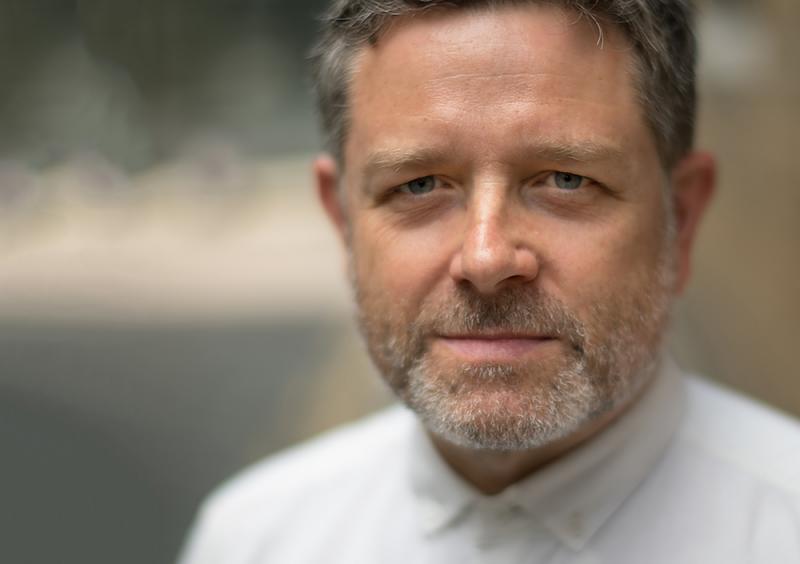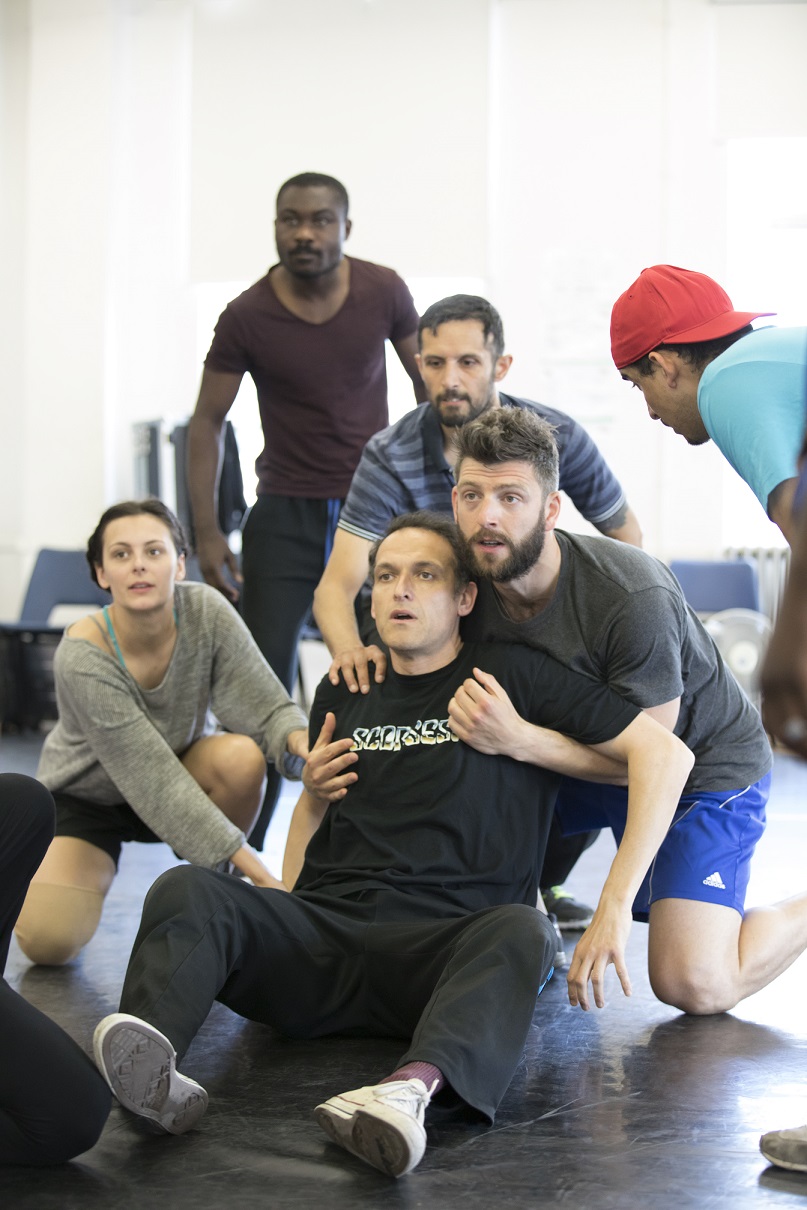Matthew Dunster on adapting 'A Tale of Two Cities' | reviews, news & interviews
Matthew Dunster on adapting 'A Tale of Two Cities'
Matthew Dunster on adapting 'A Tale of Two Cities'
Across the centuries: finding contemporary London in Dickens's French Revolution novel

When you are adapting a novel like A Tale of Two Cities, it's a privilege to sit with a great piece of writing for a considerable amount of time. You also feel secure (and a bit cheeky) in the knowledge that another writer has already done most of the work.
I always have an eye on the final production, whether I'm directing it or not. I want to always be thinking about what theatre and theatre artists can achieve on behalf of the novel. So the adaptations hopefully aren't like dialogue-led plays, more like scores for the theatre.
Tim Sheader, the director, and I, love Dickens. We re-read three novels and Two Cities made its own argument. The argument was its drama and a hunch of, “this feels relevant”. This was in early 2016.
 In Two Cities, Dickens is looking at injustices of the past, written as it was in the middle of the 19th century about the end of the 18th. He knows, however, when we look at the cruelties and injustices of the past, they don't stay there. If, as artists, our antennae are out, we recognise versions of those cruelties, repeats of those injustices and similar scenarios being played out in the present. As it was for those human beings that came before, so it now is for us. And that is shocking.
In Two Cities, Dickens is looking at injustices of the past, written as it was in the middle of the 19th century about the end of the 18th. He knows, however, when we look at the cruelties and injustices of the past, they don't stay there. If, as artists, our antennae are out, we recognise versions of those cruelties, repeats of those injustices and similar scenarios being played out in the present. As it was for those human beings that came before, so it now is for us. And that is shocking.
The novel is a lot about duality: Two countries, two sides of a man, two languages, the best of times, the worst of times etc. What helped me write the play, what unlocked the door I could stagger through, was the idea to make the play about Two Centuries. That this could be a theatrically played out conversation between 21st century Western Europe and Dickens' depiction of the 18th century.
Antennae out, I did a good deal of the work by my mother's bedside in a Salford hospital. I saw the best of the NHS give her a chance of surviving. At times, on other wards, where the stress on resources was visible, in what felt like a broken and underfunded health system – I suspect that she wasn't properly looked after and that that perhaps shortened her life. The pain I was experiencing, and the subsequent grief, are all over the choices made in adapting the novel – a novel that concentrates its pain into the exploration of three families, the Manettes, the Defarges and the Evremondes. (Rehearsal image above by Johan Persson)
A few weeks before my mum died – Britain voted to leave the EU. Our isolation from the continent loomed. The vote revealed a large part of the British population that can no longer see giving refuge to others as a source of pride. The Britain of Refuge is celebrated in A Tale of Two Cities. Our complicated relationship with America is also mentioned in the novel – at that time the brave young colony had struck for independence. In our own time, America further fed our preoccupations, as last November an angry, disenchanted population voted for a president who would make the movement of people and the protection of those with need of refuge much less likely.
Dickens also offers us a version of the future
When it came to casting we met actors who have escaped the countries they were born in and sought refuge in ours. We met other actors who were immigrants, children of immigrants and working-class British. These were the people we wanted to tell Dicken's story, and meet it with their own.
Dickens was writing about an explosion that is inevitable when people are so brutally oppressed. He then writes about the carnage and violence when the revolutionaries turn their new-found power into the terror fed by revenge.
Our rehearsals started and sadly we didn't need to work hard at all for the world to make its way into our rehearsal room. The relevance of Dicken’s novel was thrown into the sharpest relief by the terrorist attacks in Manchester, on London Bridge and in Finsbury Park. Then there was Grenfell, a tragedy that perhaps could've been avoided if the lives of the poorest members of our society were valued differently. Labour politicians name-checked A Tale of Two Cities, and there was a feeling of angry revolt in the protests on our streets and inside and outside council and government buildings. Our cast are Londoners and know the London of the Grenfell residents. They were deeply affected and wanted to bring their feelings and experiences into the work.
Dickens also offers us a version of the future. He does so with a vision of a Britain that takes in a family of refugees and allows them to prosper in safety. In rehearsals this has saddened us and moved us more than anything because we can't share his certainty; but it has also given us, within our own cause, a cause for hope.
- A Tale of Two Cities by Matthew Dunster is at Regent's Park Open Air Theatre from 7 July to 5 August
- Read more First Person features on theartsdesk
Share this article
The future of Arts Journalism
You can stop theartsdesk.com closing!
We urgently need financing to survive. Our fundraising drive has thus far raised £49,000 but we need to reach £100,000 or we will be forced to close. Please contribute here: https://gofund.me/c3f6033d
And if you can forward this information to anyone who might assist, we’d be grateful.

Subscribe to theartsdesk.com
Thank you for continuing to read our work on theartsdesk.com. For unlimited access to every article in its entirety, including our archive of more than 15,000 pieces, we're asking for £5 per month or £40 per year. We feel it's a very good deal, and hope you do too.
To take a subscription now simply click here.
And if you're looking for that extra gift for a friend or family member, why not treat them to a theartsdesk.com gift subscription?
more Theatre
 The Line of Beauty, Almeida Theatre review - the 80s revisited in theatrically ravishing form
Alan Hollinghurst novel is cunningly filleted, very finely acted
The Line of Beauty, Almeida Theatre review - the 80s revisited in theatrically ravishing form
Alan Hollinghurst novel is cunningly filleted, very finely acted
 Wendy & Peter Pan, Barbican Theatre review - mixed bag of panto and comic play, turned up to 11
The RSC adaptation is aimed at children, though all will thrill to its spectacle
Wendy & Peter Pan, Barbican Theatre review - mixed bag of panto and comic play, turned up to 11
The RSC adaptation is aimed at children, though all will thrill to its spectacle
 Hedda, Orange Tree Theatre review - a monument reimagined, perhaps even improved
Scandinavian masterpiece transplanted into a London reeling from the ravages of war
Hedda, Orange Tree Theatre review - a monument reimagined, perhaps even improved
Scandinavian masterpiece transplanted into a London reeling from the ravages of war
 The Assembled Parties, Hampstead review - a rarity, a well-made play delivered straight
Witty but poignant tribute to the strength of family ties as all around disintegrates
The Assembled Parties, Hampstead review - a rarity, a well-made play delivered straight
Witty but poignant tribute to the strength of family ties as all around disintegrates
 Mary Page Marlowe, Old Vic review - a starry portrait of a splintered life
Tracy Letts's Off Broadway play makes a shimmeringly powerful London debut
Mary Page Marlowe, Old Vic review - a starry portrait of a splintered life
Tracy Letts's Off Broadway play makes a shimmeringly powerful London debut
 Little Brother, Soho Theatre review - light, bright but emotionally true
This Verity Bargate Award-winning dramedy is entertaining as well as thought provoking
Little Brother, Soho Theatre review - light, bright but emotionally true
This Verity Bargate Award-winning dramedy is entertaining as well as thought provoking
 The Unbelievers, Royal Court Theatre - grimly compelling, powerfully performed
Nick Payne's new play is amongst his best
The Unbelievers, Royal Court Theatre - grimly compelling, powerfully performed
Nick Payne's new play is amongst his best
 The Maids, Donmar Warehouse review - vibrant cast lost in a spectacular-looking fever dream
Kip Williams revises Genet, with little gained in the update except eye-popping visuals
The Maids, Donmar Warehouse review - vibrant cast lost in a spectacular-looking fever dream
Kip Williams revises Genet, with little gained in the update except eye-popping visuals
 Ragdoll, Jermyn Street Theatre review - compelling and emotionally truthful
Katherine Moar returns with a Patty Hearst-inspired follow up to her debut hit 'Farm Hall'
Ragdoll, Jermyn Street Theatre review - compelling and emotionally truthful
Katherine Moar returns with a Patty Hearst-inspired follow up to her debut hit 'Farm Hall'
 Troilus and Cressida, Globe Theatre review - a 'problem play' with added problems
Raucous and carnivalesque, but also ugly and incomprehensible
Troilus and Cressida, Globe Theatre review - a 'problem play' with added problems
Raucous and carnivalesque, but also ugly and incomprehensible
 Clarkston, Trafalgar Theatre review - two lads on a road to nowhere
Netflix star, Joe Locke, is the selling point of a production that needs one
Clarkston, Trafalgar Theatre review - two lads on a road to nowhere
Netflix star, Joe Locke, is the selling point of a production that needs one
 Ghost Stories, Peacock Theatre review - spirited staging but short on scares
Impressive spectacle saves an ageing show in an unsuitable venue
Ghost Stories, Peacock Theatre review - spirited staging but short on scares
Impressive spectacle saves an ageing show in an unsuitable venue

Add comment